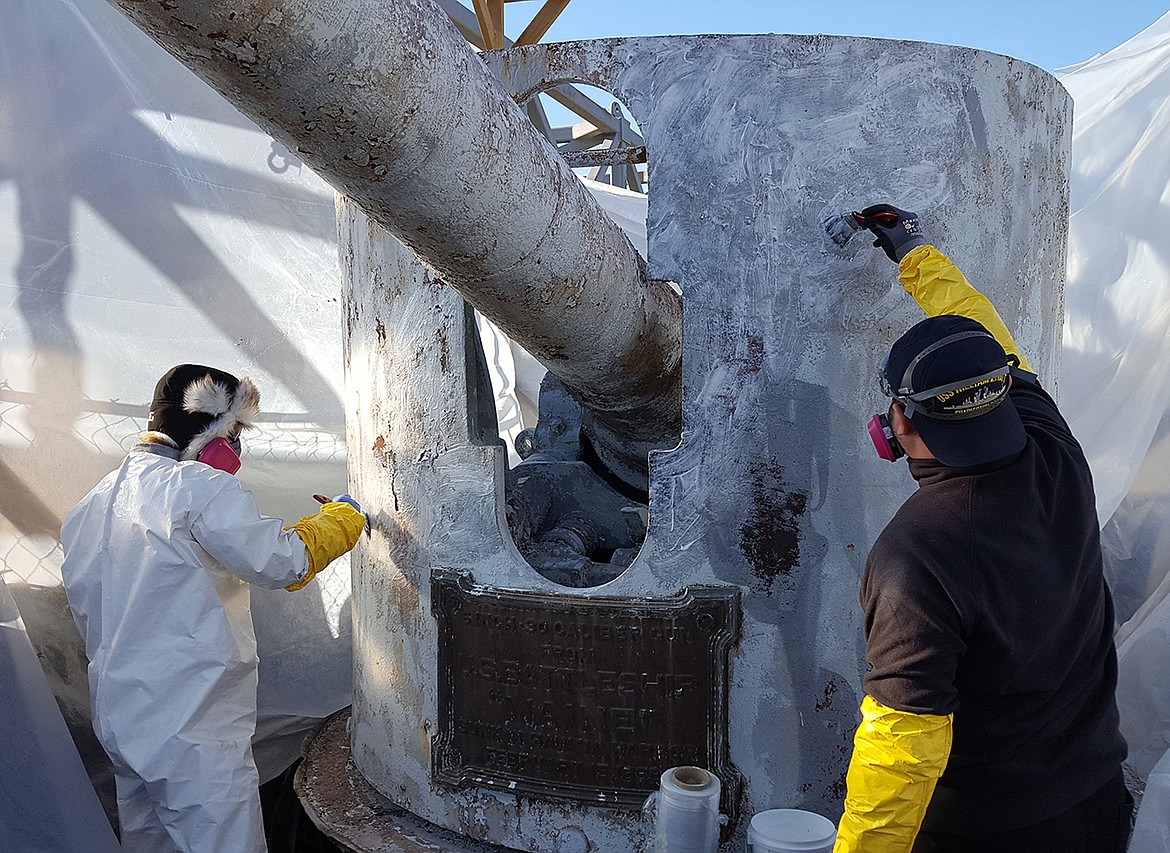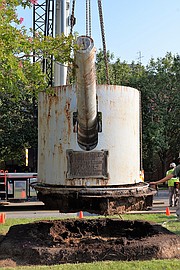University of Montana restoring gun from the USS Maine
The Center for Integrated Research on the Environment (CIRE) at the University of Montana has been tasked with restoring a gun from the USS Maine, the historic warship that sank in 1898.
The Maine played a key role in events preceding the Spanish-American War, a conflict that established the United States as a global power. The war provided the U.S. with territory and partnerships that were later essential to victory in World War II, according to Karen France, head of the Curator Branch at the Naval History and Heritage Command.
The USS Maine launched in November 1889 and was commissioned into the U.S. Navy in 1895. Maine sailed to Cuba in 1898 to protect American interests during the Cuban War of Independence. On Feb. 15, 1898, while anchored in Havana Harbor, a massive explosion occurred between the bow and the midsection of the Maine, tearing the ship apart, destroying the front third of the vessel and killing almost three-quarters of the crew.
The Maine remained a sunken wreck in Havana Harbor until 1912 when part of the ship was recovered. The rest of the ship was taken to U.S. waters near Florida, where recovery efforts began that surfaced a 16-ton gun.
The Maine carried six of these guns during its service, two at the bow, two on the bridge and two at the stern. The gun being restored is most likely one of the two from the stern.
CIRE contracted with the Warren Lasch Conservation Center of Clemson University in North Charleston, South Carolina, to carry out the specialized conservation treatment of the gun. WLCC has restored multiple ordinance and architectural elements at Fort Sumter National Monument.
CIRE is involved in many projects including assisting, curating and restoring artifacts that have been held in the U.S. Navy Yard in Washington, D.C., for many years, and the 16-ton gun is one of them.
“It was an interesting artifact,” said John Wills, CIRE’s assistant director of finance and contracting who served as lead representative and volunteer observer for the project. “I find history fascinating. War history is probably more fascinating to me than anything else, because of what it means with the way we move forward as a country.”
The multiple coating layers, which were applied to the gun over the years to adhere to Navy maintenance protocol, started to fail, and the gun needed conservation.
As specialists removed the old coating layers and the original surface of the artifact was revealed, various components and features – such as stamps and inscriptions – became visible for the first time in many years.
“One of the most rewarding components of a conservator’s work is that of knowing that your eyes are the first to see an original feature of an artifact long after it has been obscured by corrosion or degradation over time,” said Liisa Näsänen, associate director of WLCC at Clemson.
Those involved with the project said conservation of historic objects and artifacts is the best way to preserve them for the next generation.
“It [conservation] not only addresses condition issues that have adversely affected the artifact itself, but information gained through conserving the gun from the USS Maine will benefit future efforts to preserve other historic naval guns,” France said. “In addition, being able to display an object in stable condition enhances the visitor experience and aids researchers.”
The gun is in the process of being coated with a high performance and durability coating system. It will be returned to the Navy following completion of conservation and be displayed at the National Museum of the U.S. Navy in Washington, D.C.
“I would like to be there when they return it, just to see the final product,” Wills said, “because I did get to see it previous to its restoration and it was in rough shape. It was obvious that there had been a lot of maintenance done on it since it had been put in the Yard.”
The conservation report for the gun will be posted on the Navy website at https://www.history.navy.mil/, and it will give museum professionals, conservators, researchers and the public an opportunity to learn about the challenges and procedures of attempting to conserve an artifact of this size and age.
“The Navy’s rich history and proud heritage are important to everyone who has ever worn a Navy uniform,” France said. “There is no doubt this is an important artifact, and after its conservation, it will continue to ensure that those who see it will learn about and ‘remember the Maine.’”
For more information call Mona Nazeri, CIRE media information specialist, at 406-243-2617 or email mona.nazeri@mso.umt.edu.



